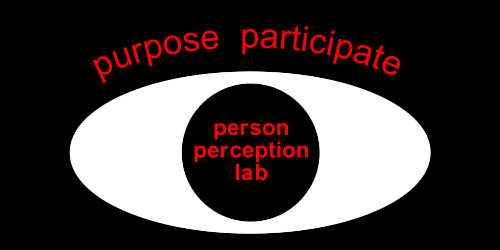

Gillian Slessor |
||||||||
 |
I received an MA (2006) and PhD (2009) in Psychology from the University of Aberdeen. After completing my PhD, I was appointed to a Sixth Century Fellowship also at the University of Aberdeen. My research investigates social cognitive processes such as emotion perception, gaze processing and deception detection. I am particularly interested in exploring how these abilities change in healthy aging and patient groups such as individuals with dementia. From August 2011 I worked as a research fellow on an ESRC-funded project investigating the formation and transmission of stereotypes. I am currently taking a career break. |
|||||||
Grants |
||||||||
| 2013-2016: Ageing, trust, and financial exploitation: social, emotional and cognitive mechanisms. Australian Research Council. AUS$420,000. 2012 – 2013. Are age-related differences in gaze following due to problems with strategic control of visual attention? Experimental Psychology Society. £2500. 2011 – 2012. Dementia and the ability to detect deception. Alzheimers Research Trust. £1750. 2010 – 2011. Susceptibility to financial exploitation in old age: links to deception detection. Nuffield Foundation Social Science Small Grant. £7020. 2010 – 2011. Improving older adults’ ability to detect deception. R.M. Gibson Scientific Research Grant. AUS$4300.
|
||||||||
Publications |
||||||||
|
Slessor,
G., Finnerty, A., Papp, J., Smith, D.T., & Martin, D. (2019).
Gaze-cueing and endogenous attention 2018 Hutchison, J., Cunningham, S.J., Slessor, G., Urquhart, J., Smith, K., & Martin, D. (2018). Context and perceptual salience influence the formation of novel stereotypes via cumulative cultural evolution. Cognitive Science, 42, 168-212. 2017 Martin, D., Cunningham, S.J., Hutchison, J., Slessor, G. & Smith, K. (2017). How societal stereotypes might form and evolve via cumulative cultural evolution. Social and Personality Psychology Compass, 11.
2016 Bailey, P. E., Szczap, P., McLennan, S. N., Slessor, G., Ruffman, T., & Rendell, P. G. (2016). Age-related similarities and differences in first impressions of trustworthiness. Cognition and Emotion, 30, 1017-1026. Slessor, G., Venturini, C., Bonny, E. J., Insch, P. M., Rokaszewicz, A., & Finnerty, A. N. (2016). Specificity of age-related differences in eye-gaze following: evidence from social and nonsocial stimuli. The Journals of Gerontology Series B: Psychological Sciences and Social Sciences, 71, 11-22. 2014 Bailey, P.E., Slessor, G., Rendell, P.G., Bennetts, R.J., Campbell, A., & Ruffman, T. (2014). Age differences in conscious versus subconscious social perception: The influence of face age and valence on gaze following. Psychology and Aging, 29, 491-502. Slessor, G., Phillips, L.H., Ruffman, T., Bailey, P.E., & Insch, P. (2014). Own-age biases in deception detection. Cognition and Emotion, 28, 493-506. Slessor, G., Bailey, P.E., Rendell, P.G., Ruffman, T., Henry, J.D., & Miles, L.K. (2014). Examining the time course of young and older adults’ mimicry of enjoyment and non-enjoyment smiles. Emotion, 14, 532. 2013 Slessor, G., Riby, D.M., & Finnerty, A.N. (2013). Age-related Differences in Processing Face Configuration: The Importance of the Eye Region. Journal of Gerontology: Psychological Sciences, 68, 228-231. 2012 Slessor, G., Phillips, L.H., Bull, R., Venturini, C., Bonny, E., & Rokaszewicz, A. (2012). Investigating the "Deceiver Stereotype": Do Older Adults Associate Averted Gaze with deception? Journal of Gerontology: Psychological Sciences and Social Sciences, 67, 178-83. 2011 Insch, P. M., Bull, R., Phillips, L. H., Allen, R. D. & Slessor, G. (2011). Adult aging, processing style and the perception of biological motion. Experimental Aging Research, 38, 169-185. Phillips, L.H. & Slessor, G. (2011). Moving beyond basic emotions in aging research. Journal of Nonverbal Behaviour, 35, 279-286. 2010 2008 2007 |
||||||||
 |